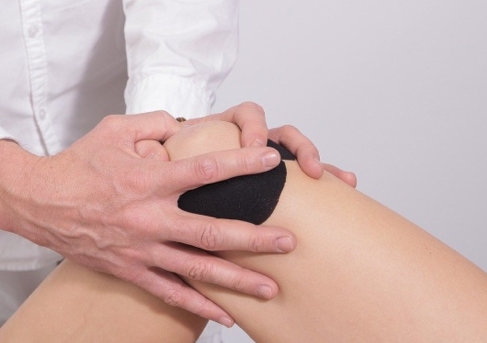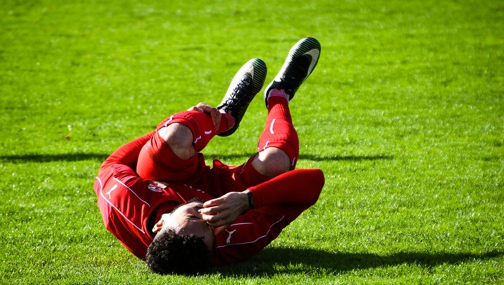 ActiveCare Physical Therapy, PC
ActiveCare Physical Therapy, PC
29 West 38th Street
Suite 601
New York, NY 10018

Physical Therapy for Knees
Do you need physical therapy for your knees? Did you recently have surgery or hurt your knee? Or is your knee getting stiff or achy due to arthritis? In any way, you will not feel like getting up and moving your joint. But mostly, doctors suggest physical therapy for such knee conditions. Physical therapy can restore your strength and show you a way to the road of recovery.
Physical therapy, or rehabilitation, can ease you from joint and muscle pain. A licensed and professional physical therapist will use various methods to strengthen your muscles, make your body move, and feel good. Here are some of the methods that a Physical therapist might try on you:
- Joint Mobilization
- Soft Tissue Mobilization
- Limitations Assessment
- Strengthening Exercises
- Stretches for Flexibility
- Kinesio Taping for Stability
- Ultrasound massage

(Source)
When you follow the instructions of physical therapists, there are chances that you can reduce your pain and might not need any surgery to recover.
Doctors might also suggest a few weeks of physical therapy after you are done with your operation to recover faster. Your doctor will recommend a physical therapist, or you can contact us to visit a professional physical therapist at our clinic.
Symptoms of Knee Pain
The severity and location of your pain may vary, and depends on what causes you the pain. You can find some symptoms and signs for knee pain below:
- Inability to keep your knee straight
- Crunching or popping noises
- Weakness or instability
- Warmth and redness to the touch
- Stiffness and swelling
Physical Therapy for Knees: Causes of Knee Pain
You may be having knee pain due to mechanical problems, injuries, different types of arthritis, and many other problems. Here are some common reasons for developing knee pain:
1. Injury
A knee injury can damage your tendons, ligaments, bursae (fluid-filled sacs) surrounding your knee joint, and your ligaments, cartilage, and bones forming the joint. Here are some common knee injuries:
- ACL Injury: This condition is common because people who play soccer, basketball, or any other sports need sudden direction.
- Fractures: The kneecap breaks while falling or because of a vehicle collision. If you are experiencing osteoporosis, you may get a knee fracture by just stepping wrong.
- Torn Meniscus: The meniscus comprises of tough cartilage and acts as a shock absorber because of rubbery nature. If you bear weight on your knee and twist, there are chances that meniscus tears up.
- Knee Bursitis: Due to some knee injuries, you may feel inflammation in the bursae. Bursae are the small sacs containing fluid and cover the knee joint. It helps in sliding ligaments and tendons smoothly over the joint.
- Patellar Tendinitis: Tendinitis is inflammation and irritation of tendons. Tendons are fibrous and thick tissue attaching bones to muscles. Cyclists, skiers, runners, and those involved in jumping activities and sports may suffer from this condition.
2. Mechanical Problems
Here some of the mechanical problems leading to knee pain:
- Loose Body
Sometimes degeneration or injury of cartilage and bone can cause you to break off your cartilage or bone and float in the spaces of your joint. This will not affect anything until the loose body interferes with the movement of your knee joint. The effect in this condition is as safe as a pencil stuck in the hinge of the door. - Iliotibial Band Syndrome
This occurs when your tissue’s tough bands extend to the outside of your knee or iliotibial band from outside the hip and become tight. They start to rub against the outer part of your femur. Cyclists and distance runners are more likely to develop iliotibial band syndrome. - Hip or Foot Pain
If you are suffering from foot or hip pain, your walking style may change to cope with the joint pain. However, this alteration will exert more pressure on your knees joint. In some of the cases, problems due to the foot or hip can cause knee pain. - Dislocated Kneecap
This happens when the patella, a triangular bone covering the front of the knee, slips off to one side. In many cases, the dislocation stays displaced and visible.
How Can a Physical Therapist Help You?
After consulting a surgeon about your condition, a physical therapist will tell you the extent of activities you should perform depending on the condition of your knee (for example, total knee replacement) you are suffering from. A physical therapist and surgeon might also involve you in physical therapy before surgery to increase your motion and strength. This may sometimes help you in recovering after surgery.
After the surgery, the physical therapist will design a rehabilitation program, especially for you, to quickly gain endurance, movement, and strength and return to your daily activities.
Call Top NYC Physical Therapists Activecare Physical Therapy ©
Contact Activecare PT at (212) 777-4374 to schedule an appointment. Visit our website for more details.
Activecare Physical Therapy ©
29 West 38th Street
Suite 601
New York, NY 10018
(212) 777-4374
staff@bestptnyc.com

